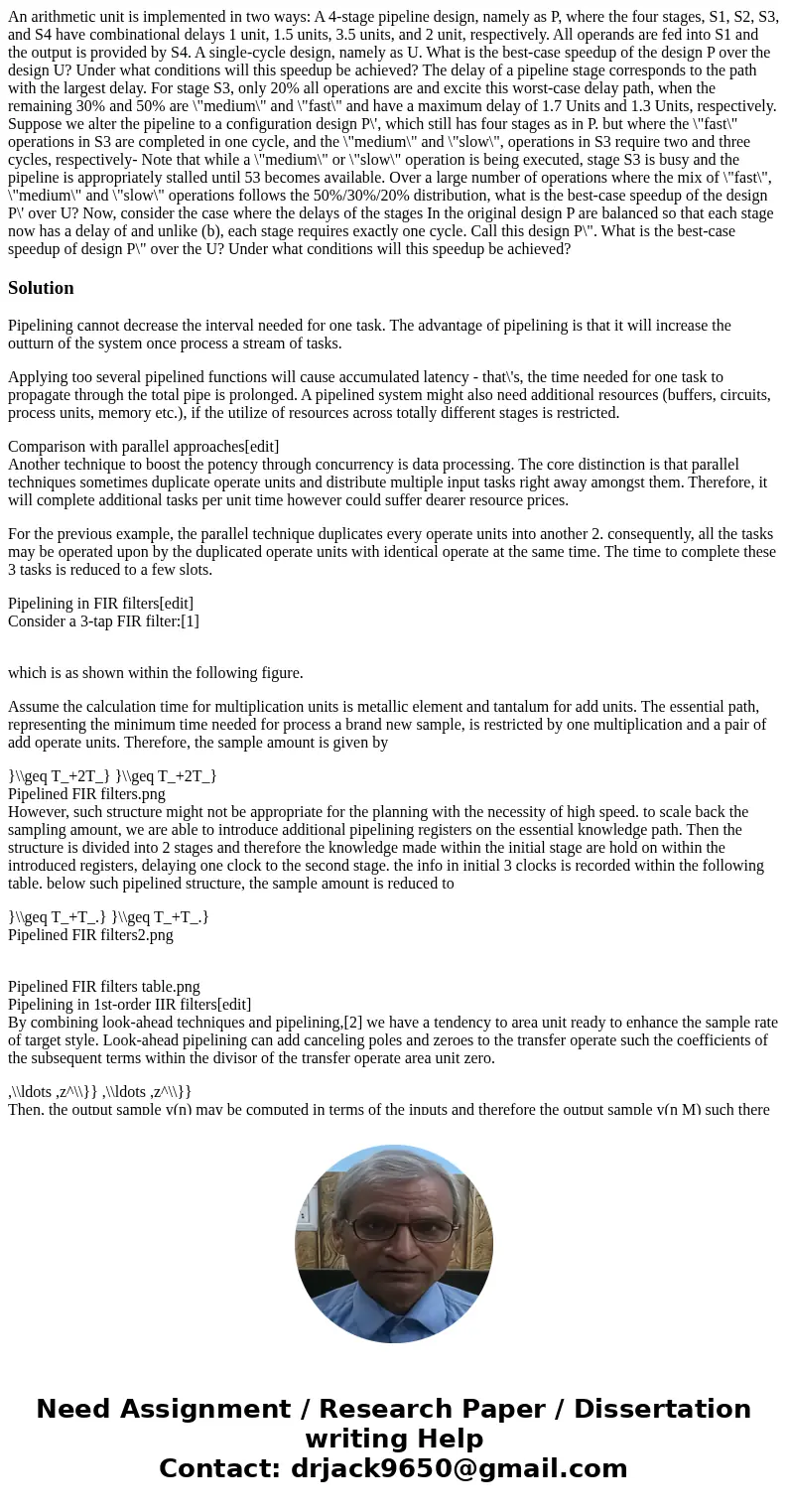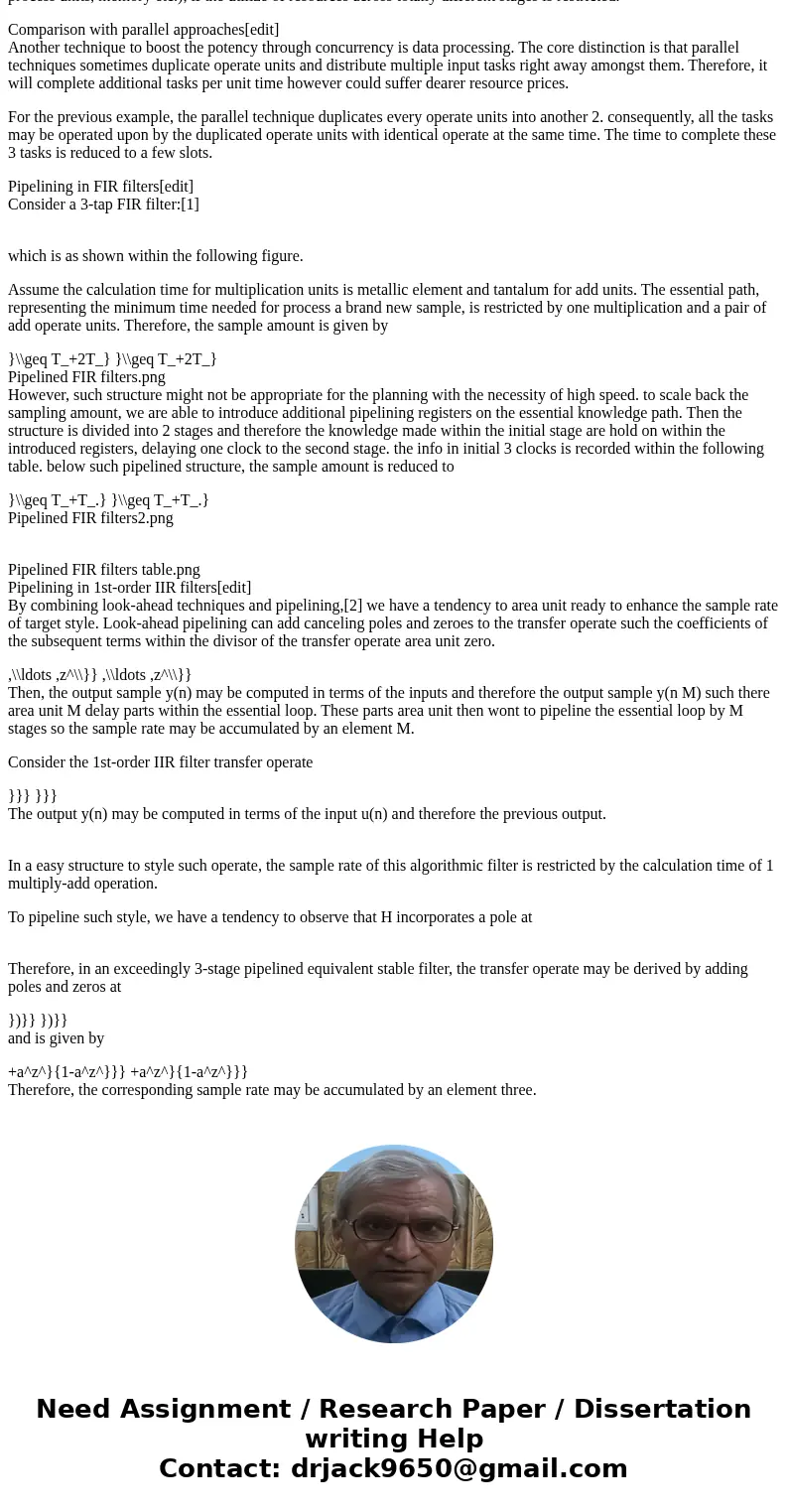An arithmetic unit is implemented in two ways A 4stage pipel
Solution
Pipelining cannot decrease the interval needed for one task. The advantage of pipelining is that it will increase the outturn of the system once process a stream of tasks.
Applying too several pipelined functions will cause accumulated latency - that\'s, the time needed for one task to propagate through the total pipe is prolonged. A pipelined system might also need additional resources (buffers, circuits, process units, memory etc.), if the utilize of resources across totally different stages is restricted.
Comparison with parallel approaches[edit]
Another technique to boost the potency through concurrency is data processing. The core distinction is that parallel techniques sometimes duplicate operate units and distribute multiple input tasks right away amongst them. Therefore, it will complete additional tasks per unit time however could suffer dearer resource prices.
For the previous example, the parallel technique duplicates every operate units into another 2. consequently, all the tasks may be operated upon by the duplicated operate units with identical operate at the same time. The time to complete these 3 tasks is reduced to a few slots.
Pipelining in FIR filters[edit]
Consider a 3-tap FIR filter:[1]
which is as shown within the following figure.
Assume the calculation time for multiplication units is metallic element and tantalum for add units. The essential path, representing the minimum time needed for process a brand new sample, is restricted by one multiplication and a pair of add operate units. Therefore, the sample amount is given by
}\\geq T_+2T_} }\\geq T_+2T_}
Pipelined FIR filters.png
However, such structure might not be appropriate for the planning with the necessity of high speed. to scale back the sampling amount, we are able to introduce additional pipelining registers on the essential knowledge path. Then the structure is divided into 2 stages and therefore the knowledge made within the initial stage are hold on within the introduced registers, delaying one clock to the second stage. the info in initial 3 clocks is recorded within the following table. below such pipelined structure, the sample amount is reduced to
}\\geq T_+T_.} }\\geq T_+T_.}
Pipelined FIR filters2.png
Pipelined FIR filters table.png
Pipelining in 1st-order IIR filters[edit]
By combining look-ahead techniques and pipelining,[2] we have a tendency to area unit ready to enhance the sample rate of target style. Look-ahead pipelining can add canceling poles and zeroes to the transfer operate such the coefficients of the subsequent terms within the divisor of the transfer operate area unit zero.
,\\ldots ,z^\\}} ,\\ldots ,z^\\}}
Then, the output sample y(n) may be computed in terms of the inputs and therefore the output sample y(n M) such there area unit M delay parts within the essential loop. These parts area unit then wont to pipeline the essential loop by M stages so the sample rate may be accumulated by an element M.
Consider the 1st-order IIR filter transfer operate
}}} }}}
The output y(n) may be computed in terms of the input u(n) and therefore the previous output.
In a easy structure to style such operate, the sample rate of this algorithmic filter is restricted by the calculation time of 1 multiply-add operation.
To pipeline such style, we have a tendency to observe that H incorporates a pole at
Therefore, in an exceedingly 3-stage pipelined equivalent stable filter, the transfer operate may be derived by adding poles and zeros at
})}} })}}
and is given by
+a^z^}{1-a^z^}}} +a^z^}{1-a^z^}}}
Therefore, the corresponding sample rate may be accumulated by an element three.


 Homework Sourse
Homework Sourse